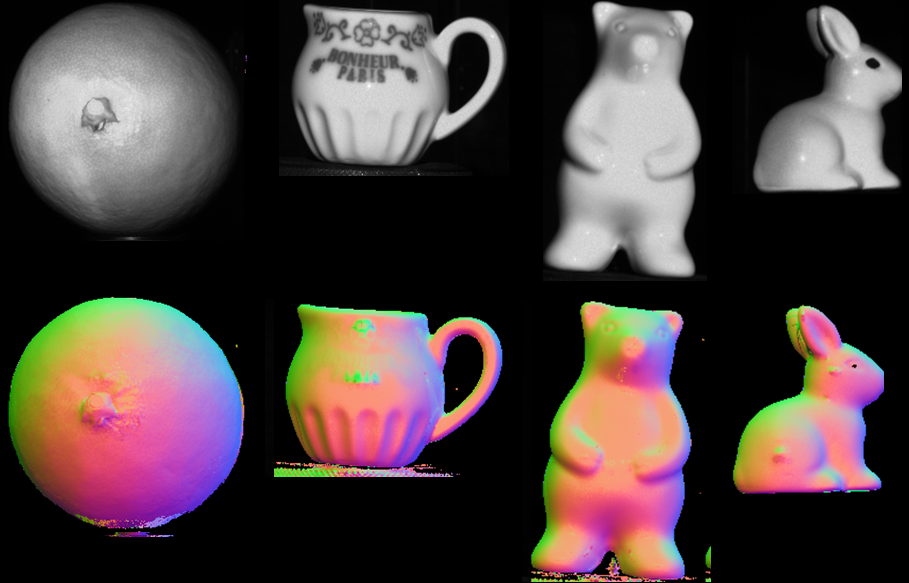
Reflectance and shape are two important components in visually perceiving the real world. Inferring the reflectance and shape of an object through cameras is a fundamental research topic in the field of computer vision. While three-dimensional shape recovery is pervasive with varieties of approaches and practical applications, reflectance recovery has only emerged recently. Reflectance recovery is a challenging task that is usually conducted in controlled environments, such as a laboratory environment with a special apparatus. However, it is desirable that the reflectance be recovered in the field with a handy camera so that reflectance can be jointly recovered with the shape. To that end, we present a solution that simultaneously recovers the reflectance and shape (i.e., dense depth and normal maps) of an object under natural illumination with commercially available handy cameras.
- Trung Thanh Ngo, Hajime Nagahara, Ko Nishino, Rin-ichiro Taniguchi, Yasushi Yagi,
Reflectance and Shape Estimation with a Light Field Camera under Natural Illumination,
International Journal of Computer Vision (IJCV) (2019), Special issue on best papers of BMVC 2017, - Trung Thanh Ngo, Hajime Nagahara, Ko Nishino, Rin-ichiro Taniguchi, Yasushi Yagi,
Reflectance and Shape Estimation with a Light Field Camera under Natural Illumination,
British Machine Vision Conference (BMVC), Sept. 2017, Oral


We introduce a method to recover the shape of a smooth dielectric object from polarization images taken with a light source from different directions. We present two constraints on shading and polarization and use both in a single optimization scheme. This integration is motivated by the fact that photometric stereo and polarization-based methods have complementary abilities. The polarization-based method can give strong cues for the surface orientation and refractive index, which are independent of the light direction. However, it has ambiguities in selecting between two ambiguous choices of the surface orientation, in the relationship between refractive index and zenith angle (observing angle), and limited performance for surface points with small zenith angles, where the polarization effect is weak. In contrast, photometric stereo method with multiple light sources can disambiguate the surface orientation and give a strong relationship between the surface normals and light directions. However, it has limited performance for large zenith angles, refractive index estimation, and faces the ambiguity in case the light direction is unknown. Taking their advantages, our proposed method can recover the surface normals for both small and large zenith angles, the light directions, and the refractive indexes of the object.

